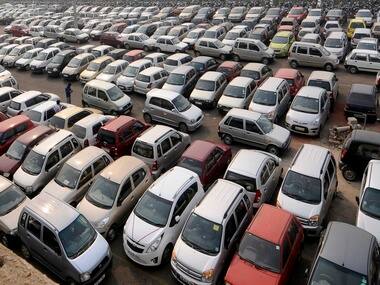New Delhi: The automobile industry is once again raising its voice against cheaper imports of cars and engines from Europe, which is one of the demands of the European Union under the India-EU Free Trade Agreement.
Do you as a customer want cheaper European cars or not? More importantly, does this provision benefit other global car makers who can route exports to India via Europe and thereby do so more profitably? Also, what does it do to indigenous manufacturing of cars?
[caption id=“attachment_692073” align=“alignleft” width=“380”] Siam has said any lowering of customs duty will severely damage the Indian automobile sector. Reuters[/caption]
Siam has said any lowering of customs duty will severely damage the Indian automobile sector. Reuters[/caption]
In a white paper released ahead of Prime Minister Manmohan Singh’s visit to Germany which begins tomorrow, the Society of Indian Automobile Manufacturers (Siam) has said any lowering of duties will benefit not India but the EU, where market for vehicles is already declining. Are Indian negotiators paying heed?
Siam has said any lowering of customs duty will severely damage the Indian automobile sector. India is one of the very few global automobile markets which is growing year on year. In one sweep, the government may kill the goose that is laying the golden eggs.
As of now, only high end and luxury cars are coming from Europe as completely built units (CBUs). So if the present situation were to continue, some of your Audis, BMWs and Mercs would become cheaper because fully built cars could be brought in under this FTA at much lower duties and also car engines imports could become cheaper.
In fact, for certain models, the famed European brands may consider using only the import route to service the Indian market and manufacture only mass models within India.
Impact Shorts
More ShortsIn the paper, SIAM has argued that lowering import barriers would affect local manufacturing, something already evident in every country around the world where there has been a significant increase in import of cars. It gives the example of Australia, which reduced import duties from 17.5 percent in 1999 to 15 percent in 2000 and 10 percent in 2005.
“While the number of imported vehicles has jumped from 11 percent of new vehicle sales to 66 percent in 1999, domestic manufactured vehicle sales declined from 325,216 in 1987 to 302,615 in 1996 and further to 271,500 in 1999. In 2002, the local production was 350,000 against a domestic market of 825,000. Since a third of domestic production is exported, the share of imported vehicles in the domestic market has increased to over 70 percent. Currently, with further lower duty import content has further gone up to over 75 percent.”
In 2011-12, the domestic automobile industry reached a turnover of Rs 264,000 crore and vehicle exports revenue was around Rs 32,000 crore. In other words, we export only about one in eight vehicles produced in India.
Siam has also given the examples of FTAs with other countries such as Japan, South Korea and the ASEAN to support its arguments.
“The government has consistently maintained this policy in all FTAs, including FTAs with Japan, ASEAN and South Korea. These items have also been identified in the Automotive Mission Plan 2006-16. We would like to reiterate that these tariff lines should be kept in the India’s Negative List under the India-EU FTA,” Siam said.
The industry body also pointed out that the EU was a declining market in terms of automotive exports, while India was a rapidly growing market. Therefore, the gains through this FTA would only be for the EU and not for India.
Not just import duties on new European cars, the India-EU FTA is also apparently discussing the concept of ’non-new goods’. In common parlance, this means imports of used Euroepan cars.
“The EU is demanding that India cannot ‘apply to non-new goods requirements or other measures, including enforcement measures, which are more restrictive than to new goods. Non-new goods shall be understood to include notably used and re-manufactured goods,” Siam said.
It said talks are being held between the two side to halve customs duty on all cars from 60 percent to 30 percent and additionally a certain quota of cars (much more than what the EU is exporting today) that can be exported by the EU to India at a highly reduced duty of only 10-15 percent.
“Talks are on for 10 percent quota for large cars, which are defined in terms of more than 1,500cc cars! The EU is insisting on a roadmap for zero tariff regimes for all cars to ensure permanent opening up of the trade route with India,” Siam said.
In 2010-11, the EU exported around $3.4-billion worth of cars as CBUs and CKDs (completely knocked down units) to India. On the other hand, India exported $1.7-billion worth of cars to Europe, Siam said.
Imports of CBUs from the EU increased from 5,000 large cars in 2009-10 to 11,000 units in 2010-11, and imports of CKDs went up from 17,000 units in 2009-10 to 22,000 units in 2010-11. However, during the same period, exports of India’s small cars have declined from almost three lakh units in 2009-10 to around 2.25 lakh units in 2010-11.
)